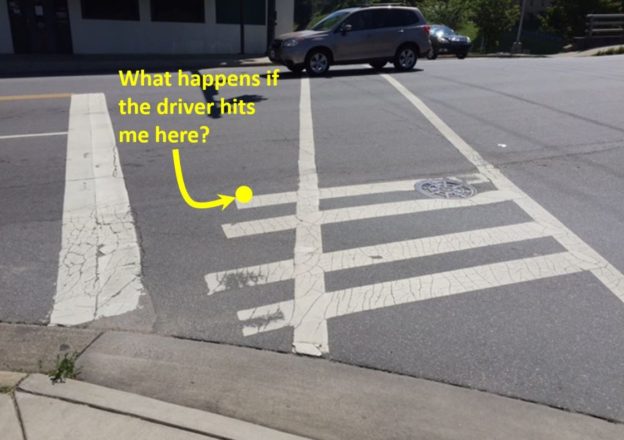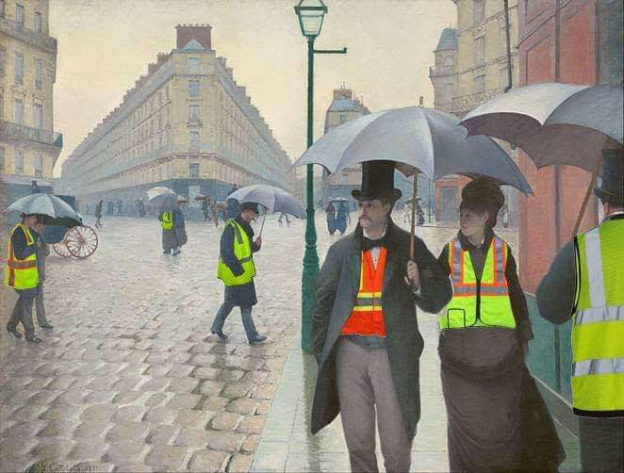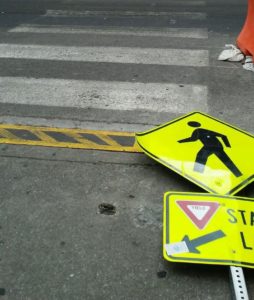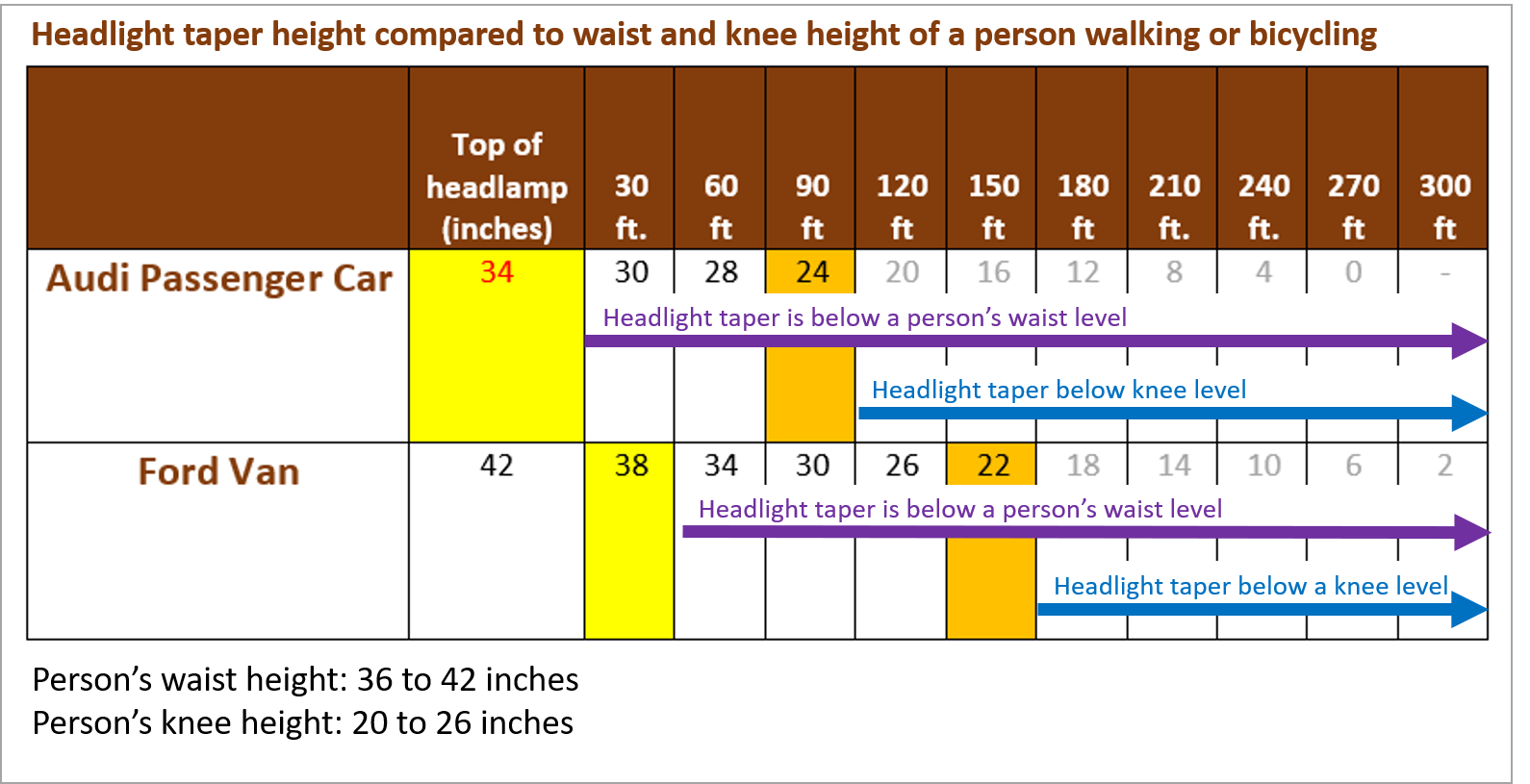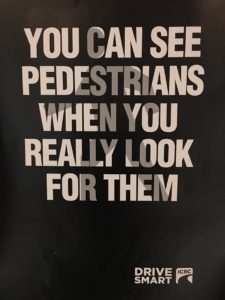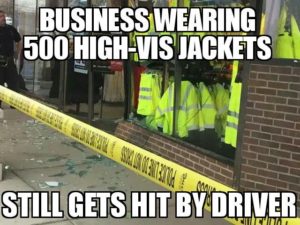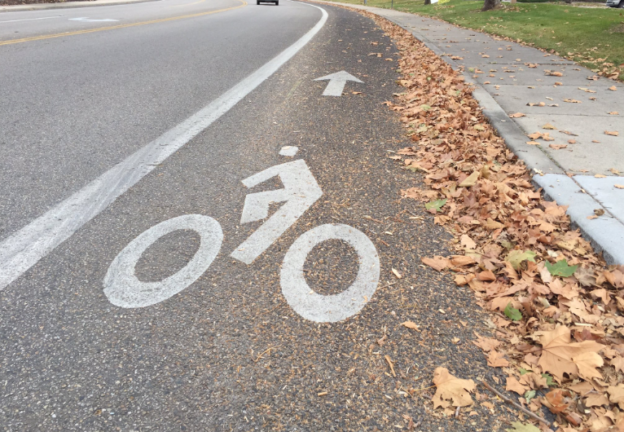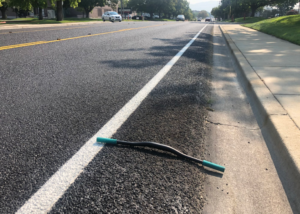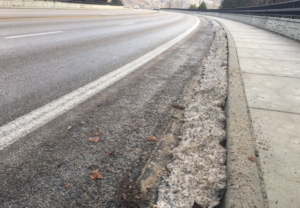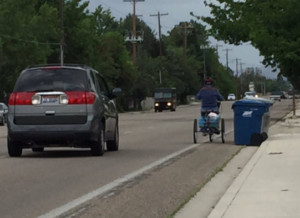The 12 Days of Safety Myths
December 11, 2018
by Don Kostelec
“A reminder to pedestrians and bicyclists that paint isn’t there to protect you.
It’s only there to absolve motorists if you deviate from it.”
– The wise, old sage of motordom, “Bob Gunderson”
We’ve all been there: A public meeting concerning your primary walking or bicycling route. You have expectations that things might be different this time with your local or state DOT. You hope for protected bike lanes or frequent, signalized pedestrian crossings; you know, everything the modern engineering guidance is pointing to with regard to safety. You leave with nothing more than a paint sample from Sherwin-Williams and a deep suspicion that the fumes from all the paint they promised was weakening their cognitive abilities.
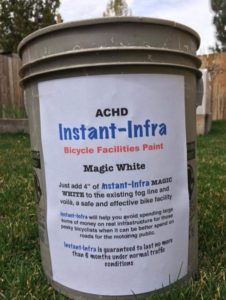
Paint = Instant Infrastructure (Image by @BoiseStreetDept)
If you try to counter the project engineer you get their version of a Jedi mind trick, a wave of the hand and a “No, the paint is safe infrastructure and it will protect you.”
The idea that paint is a solution for a safety issue is probably the single worst default position a designer can take. I look back on projects and plans I was involved with during my less-enlightened days and think, “I can’t believe I actually recommended a sharrow.” Or, “Why did I mention nothing more than adding a crosswalk?”
It doesn’t take too deep of a dive into prevailing design guidance and research to find language that discourages the use of paint as a standalone safety countermeasure. Even when paint is used in combination with other measure, the existence of paint can be the thing engineers and law enforcement point to if, as Bob Gunderson warns, you deviated from the paint. Albuquerque Police seem to believe in the magical force field power of paint.
Crosswalks
The 2005 FHWA publication Safety Effects of Marked versus Unmarked Crosswalks at Uncontrolled Locations: Final Report and Recommended Guidelines had some pretty significant findings. This is one that @peatonx unearthed while assisting me on a Comprehensive Pedestrian Plan in North Carolina.
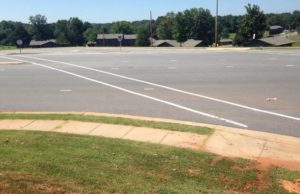
The 160-foot crossing on Oak Street in Forest City, North Carolina. You get nothing but paint, and the least effective crosswalk marking to boot!
- “The study results revealed that on two-lane roads, the presence of a marked crosswalk alone at an uncontrolled location was associated with no difference in pedestrian crash rate, compared to an unmarked crosswalk. Further, on multilane roads with traffic volumes above about 12,000 vehicles per day, having a marked crosswalk alone (without other substantial improvements) was associated with a higher pedestrian crash rate compared to an unmarked crosswalk.”
That was 13 years ago, yet take a walk anywhere in your community and you’re like to find dozens of examples of nothing more than some paint and a couple of signs. If a federal study on motor vehicle lanes had such stark conclusions you’d probably find engineers mobilizing millions to rectify the situations.
The engineering countermeasures recommended in the FHWA study include:
- Raised medians on multilane roads;
- Narrowing road or providing curb extensions;
- Traffic signals, where pedestrian volumes warrant it (don’t get me started on this one);
- Reducing vehicle travel lane widths to provide space for medians;
- Traditional traffic calming on lower volume, low speed streets;
- Adequate lighting;
- Tighter turn radii to slow vehicles;
- Using flashers, warning signs, and other active devices;
- Reducing the required widths on new streets in new areas.
It’s all there for you to use as you advocate for it. On that pedestrian plan, the DOT built a new state secondary road monstrosity and didn’t care enough for pedestrians to do something other than paint a couple of lines on a high speed arterial with a 160-foot pedestrian crossing between public housing and downtown (see pic). To date, NCDOT has done nothing with that horrendous crossing despite endorsing the town’s pedestrian plan in 2015.
Of course, we have to leave it to the traffic engineers to screw up the findings of the 2005 FHWA study. When MUTCD was updated in advance of its 2009 update it was intended to include the findings of the 2005 FHWA study. MUTCD Section 3B.18 – Crosswalk Markings states:
- “New marked crosswalks alone, without other measures designed to reduce traffic speeds, shorten crossing distances, enhance driver awareness of the crossing, and/or provide active warning of pedestrian presence, should not be installed across uncontrolled roadways where the speed limit exceeds 40 mph and either:
1. The roadway has four or more lanes of travel without a raised median or pedestrian refuge island and an ADT of 12,000 vehicles per day or greater; or
2. The roadway has four or more lanes of travel with a raised median or pedestrian refuge island and an ADT of 15,000 vehicles per day or greater.”
I put the “40 mph and either” in red because this is where the confusion starts among engineers, according to FHWA Safety Engineer Peter Eun. The language was not intended to be so specific in terms of meeting the two conditions: 40 mph and one of the two other circumstances. The language was to read “40 mph and/or either…” The result is designers still think this only applies to 40 mph streets and higher and they do nothing elsewhere. Mr. Eun says they hope to correct that in the upcoming MUTCD update.
Sharrows
The sharrow is probably the worst example of the false promise of paint: A horizontal sign on a road, backed by all the thoughts and prayers engineers can muster, all while they claim they can’t afford dedicated bike lanes for the safety for today’s bicyclists because they’re too busy widening roads for motorists that won’t exist until 2040.
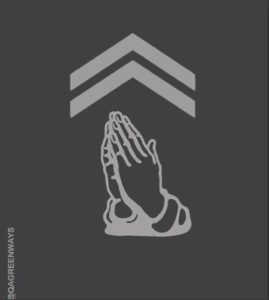
A better sharrow design?
(Image @QAGreenways)
We could beat the sharrow horse until it’s dead, dead, dead, but the Bicycle Lobby has already assumed that critical role.
That’s thoughts and prayers approach to sharrows is prevalent across DOT literature, as in the North Carolina Department of Transportation’s Complete Streets Planning and Design Guidelines: “In streets where bicycle lanes cannot be accommodated, shared lanes provide an alternative to bicycle lanes…Shared-lane markings increase a motorist’s awareness of the
presence of cyclists (by raising the motorists’ expectation that they will encounter cyclists).”
They’re definitely not alone in that thinking.
Wes Marshall, an engineer and academic at CU-Denver, is perhaps my favorite transportation researcher. He takes on topics others seem unwilling to address. In doing research with Chicago data, Marshall and Company found streets where sharrows were “installed” resulted in less of decrease in crashes than streets that had no sharrows installed over the same time period.
The paper states, “As sharrows do not provide designated space for bicyclists and do not enhance the overall bicycle network, all cities should (as many already have) begin to consider sharrows simply as signage as opposed to actual infrastructure.”
(Why Chicago? Bicyclist dooring crashes are not allowed to be processed through typical crash reporting protocols because they happen with a stationary vehicle. Most crash reporting protocols require a collision with a moving motor vehicle, which is a good one to remember when someone tries to play the “bicyclists have the same rights and responsibilities” game. Chicago is one of the few places where a dooring crash is allowed to be treated the same as other crashes, so they have useful data for purposes of evaluating the impacts of sharrows.)
On the 1st day of Safety Myths, my DOT gave to me….bright, reflective vests!

